Perk Up with 6 Tasteful Malaysian Drinks
Lighten your mood and rejuvenate your senses with 6 must-try Malaysian drinks!
Discover the authentic in Asian cuisine food
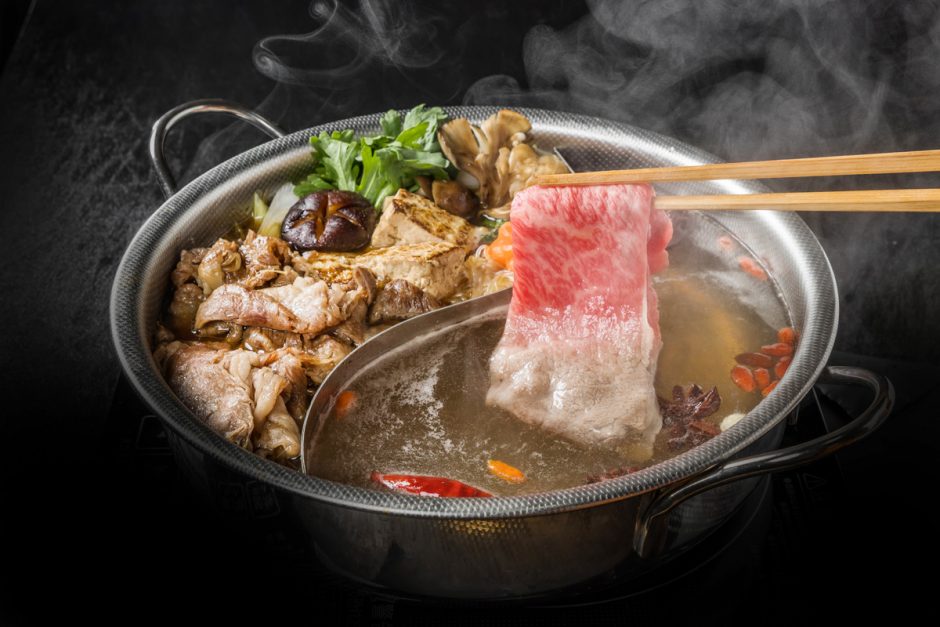

Hot pot—or steamboat if you’re of a certain age—is a pretty perfect name for the dish we’re about to discuss. It’s literally a hot pot of broth which sits in the middle of the table, and all the diners throw in whatever ingredients they like and let them all cook together. There are many different versions of hotpot, with different broths and myriad ingredients, but they all have the same basic principle in common.
While it’s incredibly common for people to go out for hot pot, it’s also really easy to do at home. Hot pot is a cheap and fantastic way to feed a whole heap of people, and a great excuse to bring people together and get them involved in the meal. Plus, it’s a one-pot wonder and all the cooking is done by the diners. It couldn’t be easier!
Don’t believe us? Fine. We’ll show you. Read on to find out how to hot pot at home and you’ll never go to a restaurant for hot pot again! Ok, so you probably will, but the point is that it’s way simpler than you think!
Here’s what you’ll need…
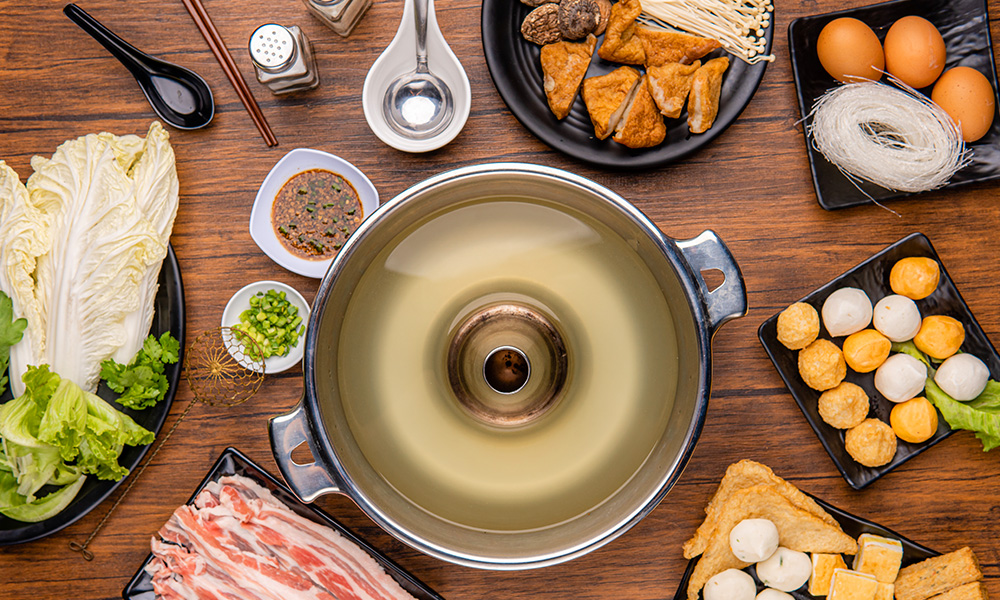
First off, you need your vessel! Most hot pots these days are a divided stainless-steel dish, which lets you put two different types of broth in each half, though you can still find the traditional pot with the big chimney in the middle. Obviously, this is the key to the whole enterprise. You can buy these at any decent Asian supermarket, homeware store or specialty kitchen store.
A mobile hot plate or burner is essential. After all, it’s called hot pot, not cold pot (sorry about that terrible joke). These are cheaper than you think, and you can grab one from any kitchen or homeware store. There are also some really nice ones that use candles and flame if you prefer a more stylized burner.
You’ll need chopsticks—if you can’t use chopsticks, it’s time to learn!—preferably 2 pairs per person. The first pair is for stirring the pot and eating, while the second pair is for handling the raw food and adding it to the hot pot.
Another useful tool—though not strictly mandatory—is a slotted spoon. This helps you keep track of what’s in the pot, so you’re not pulling up rubbery prawns and leathery beef, and lets greedy diners pull out ingredients en masse.
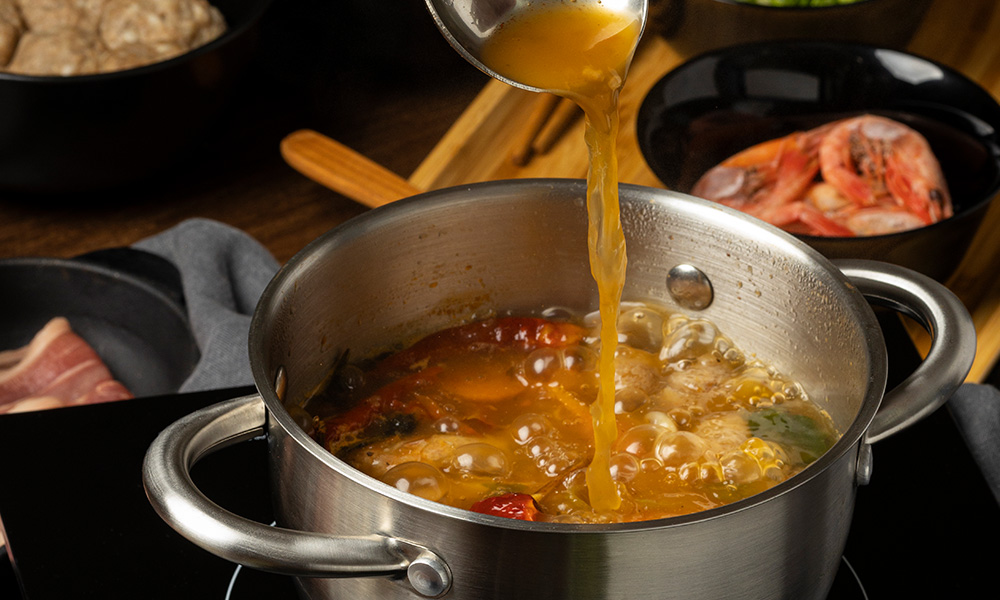
If you’ve got the divided pot, you can choose two! This is great if you’ve got some diners who love spicy and rich broths, like Sichuan, while others prefer something milder, say, Tom Yum. The broth really dictates what the overall flavour is, so pick carefully. If you’re keen, it’s a great chance to try out a bone broth or soup you’ve really wanted to make, but if you’re time poor, there’s plenty of prepared broths and flavour packets you can buy and add yourself.
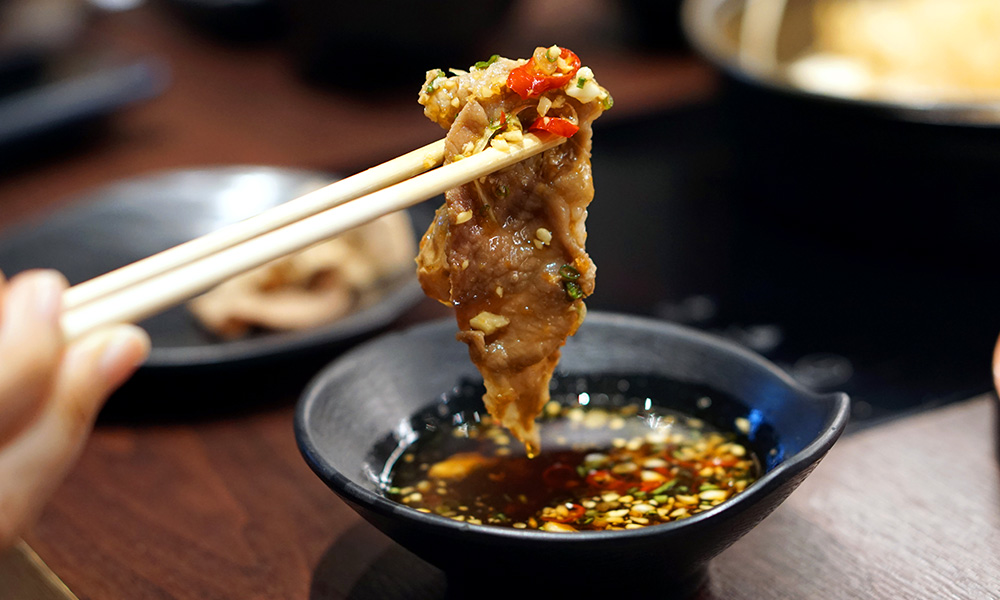
Second only to the broth in terms of flavour importance. Each diner can have as many dipping sauces as they choose to dunk their veggies and proteins in. What types and flavours you choose should match the broth you’ve selected. If you choose a deep, earthy, spicy broth then maybe think about using sesame oil as a way to cut through the heat. While if you’ve chosen a milder broth, then maybe some chilli oil, tahini or XO sauce would be a good choice. Plus, it’s a great excuse to go out and buy a whole heap of little dishes and saucers to serve them all in!
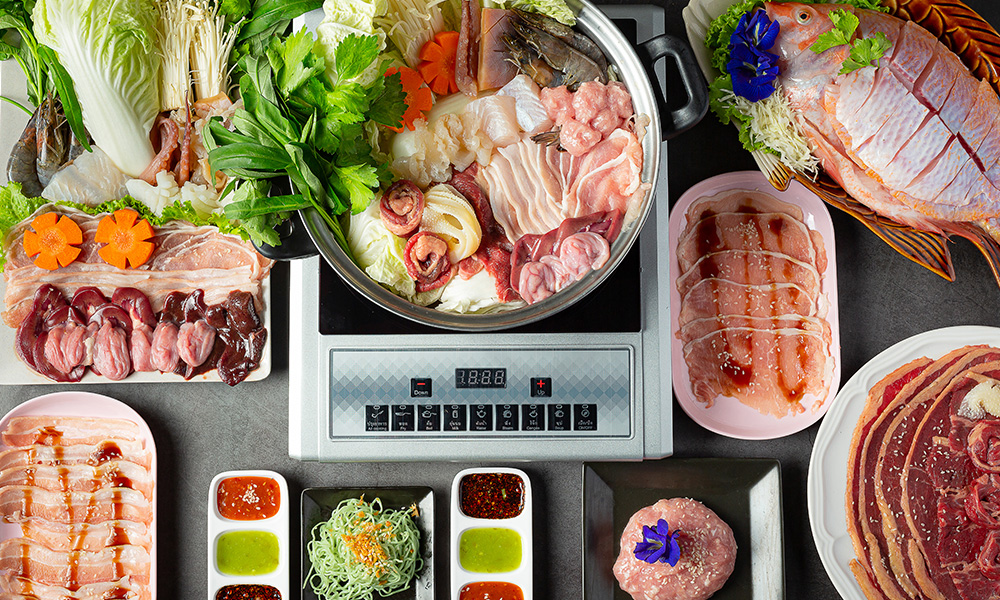
The broth may dictate the flavour profile of the hotpot, but the ingredients are the star.
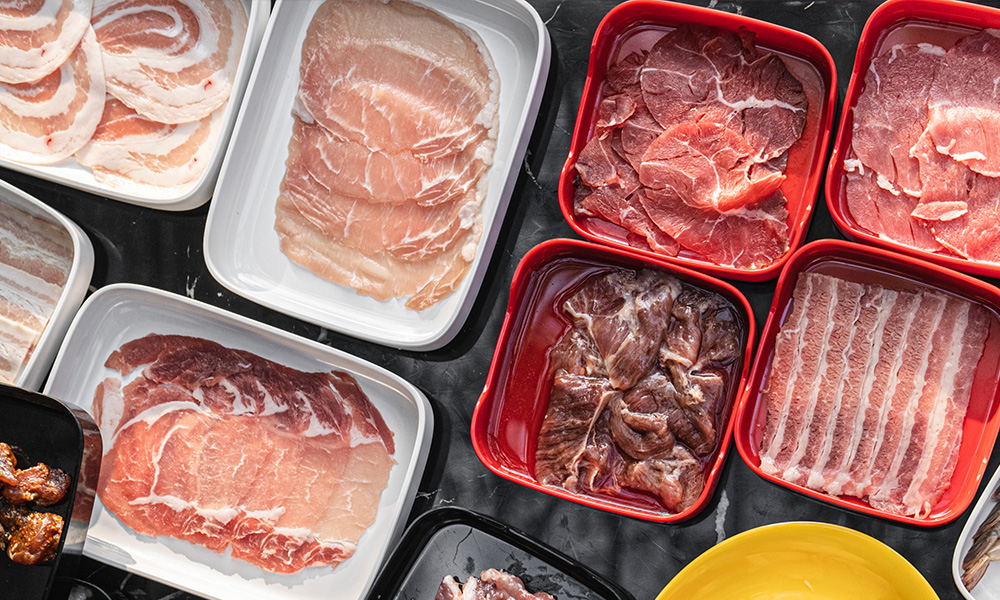
Beef and lamb are super popular, and pork belly is always a crowd pleaser. Just make sure that any meat you use is thinly sliced! Your butcher will be happy to accommodate you here, and most Asian supermarkets will sell pre-sliced meats in packs. You don’t have to worry about using expensive cuts, fat is great for adding flavour to the hot pot. Chicken is also used, but its longer cooking time frustrates a lot of hungry hot pot fiends, so it’s a distant fourth here.
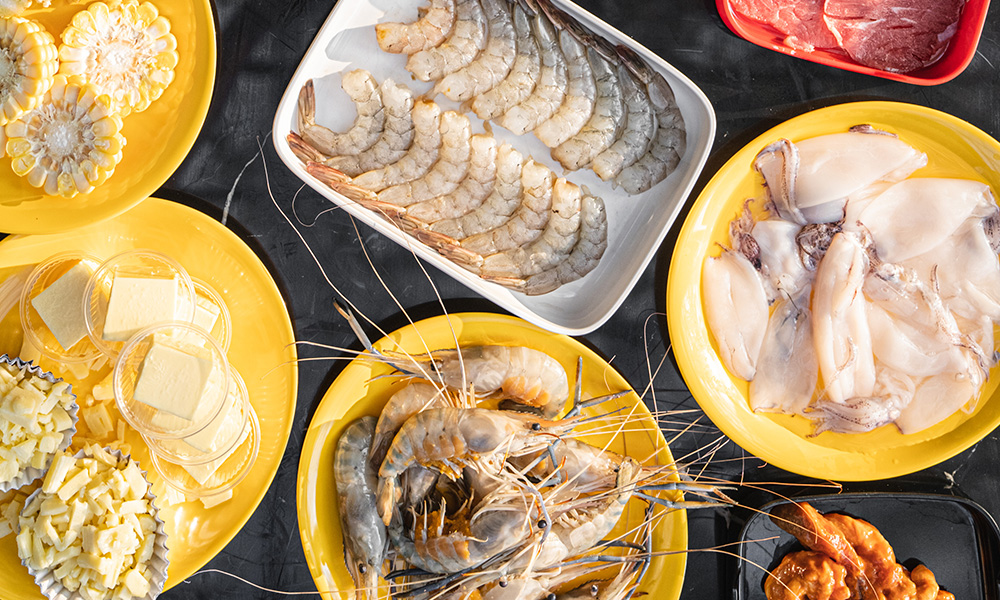
Whole prawns are great, as they don’t take long to cook and the heads and shells can help flavour the broth. Shellfish are great, but bigger varieties—like crab and lobster—take longer to cook unless they’re taken out of the shells. Shucked oysters, scallops, mussels (cooked), squid and sliced fish are all great options for those who don’t want to eat too much meat.
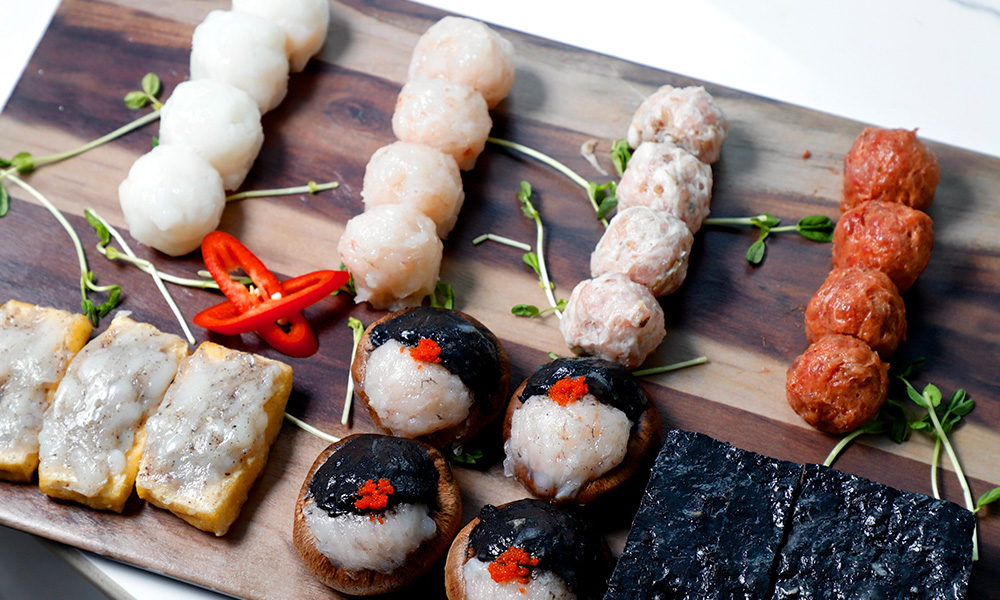
Meatballs, that is. At all-you-can-eat hot pot restaurants, there’s usually a whole section of the food station dedicated to beef, squid balls, fish (boiled or fried), shrimp, pork and beef tendon.
Balls are cooked until they expand; seafood balls will expand to the size of golf balls, while denser beef and pork balls will only puff up slightly, usually taking about five minutes. It’s best to add these into the pot right at the start to soak up some of the soup’s flavour.

You can’t go wrong here, really. Just pick anything you like to eat! You can go traditional and pick greens from China, Japan or Thailand depending on the origin of your broth, or you can grab whatever’s in season or whatever your kids eat. Mushrooms, turnips, tofu and leafy greens are always popular, but you can throw in onions, sweet potatoes, carrot or anything else that tickles your fancy.
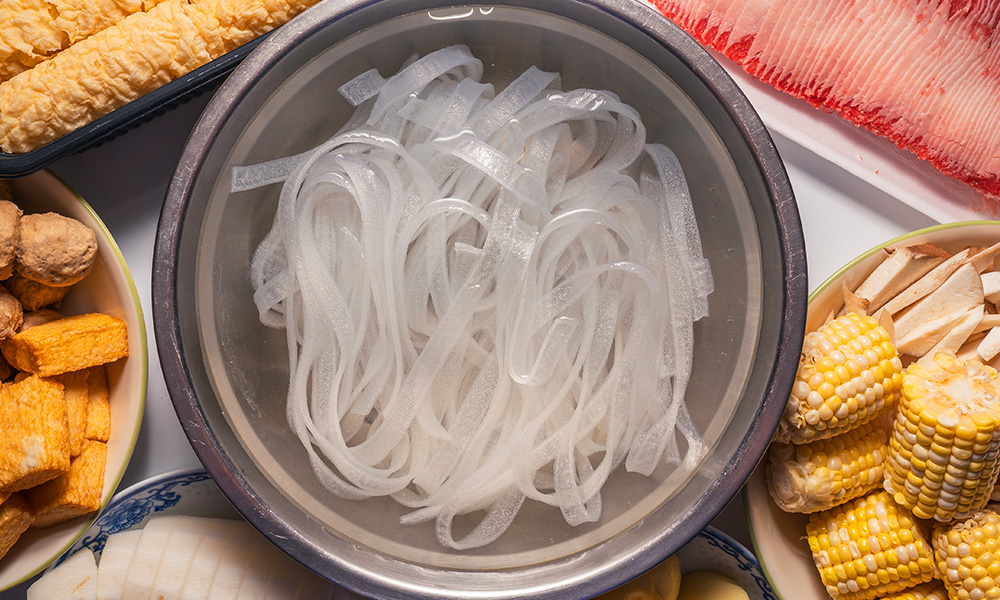
Noodles like udon, vermicelli and chow mein are staples and are great for soaking up the broth that’s been simmering for hours and is now saturated with the flavours of the meat, seafood and veggies. The best idea is to drop them in near the end of the meal when the broth is at its most flavourful.
A tasty, low carb alternative to regular noodles are sweet potato noodle bundles or shirataki noodles. These chewy and gelatinous noodles, originally from Japan, come in different shapes and don’t really absorb liquid or turn soggy.
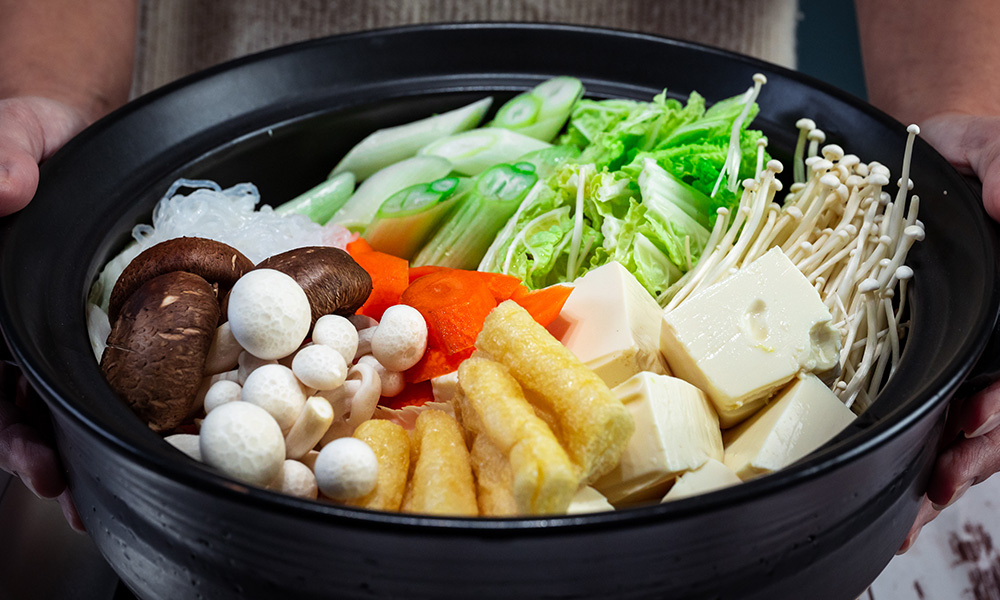
See! Told you it wasn’t so hard. Now you’ve got the know-how, organize a hot pot night at your place. It’ll be a crowd pleaser for sure!

Lighten your mood and rejuvenate your senses with 6 must-try Malaysian drinks!

Pair your hearty barbecues with these refreshing Asian delights!

What are the properties of ginger, and how to pick, store and use ginger in your cooking? Find out here!